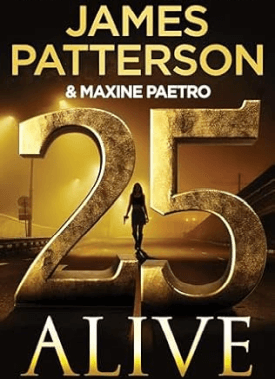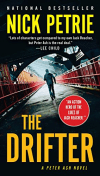Winnie the Pooh Books In Order
Book links take you to Amazon. As an Amazon Associate I earn money from qualifying purchases.Publication Order of Winnie-the-Pooh Books
| When We Were Very Young | (1924) | Description / Buy at Amazon |
| Winnie-the-Pooh | (1926) | Description / Buy at Amazon |
| Now We Are Six | (1927) | Description / Buy at Amazon |
| The House at Pooh Corner | (1928) | Description / Buy at Amazon |
Publication Order of Winnie-the-Pooh Collection Books
| The World of Winnie-the-Pooh | (1926) | Description / Buy at Amazon |
| The Christopher Robin Story Book | (1929) | Description / Buy at Amazon |
| The Christopher Robin Birthday Book. | (1930) | Description / Buy at Amazon |
| The Christopher Robin Verse Book | (1932) | Description / Buy at Amazon |
| The World of Pooh and the World of Christopher Robin | (1957) | Description / Buy at Amazon |
| The World of Christopher Robin | (1958) | Description / Buy at Amazon |
| The Complete Tales and Poems of Winnie-the-Pooh | (1961) | Description / Buy at Amazon |
| Winnie-the-Pooh's Friendship Book | (1992) | Description / Buy at Amazon |
| Eeyore's Gloomy Little Instruction Book | (1996) | Description / Buy at Amazon |
| The Original and Classic Pooh Treasury: Vol. 1 | (1997) | Description / Buy at Amazon |
| The Classic Pooh Treasury Volume 2 Read-Along | (1997) | Description / Buy at Amazon |
| The Classic Pooh Treasury: The House at Pooh Corner Vol 3 | (1997) | Description / Buy at Amazon |
Winnie-The-Pooh (Series by A.A. Milne)
Before writing “Winnie the Pooh”, author A. A. Milne was already a successful writer, writing for Punch, an English humor magazine, had a mystery novel published, and was also a playwright. He only began writing poetry for kids after being asked by Rose Fyleman, a fellow Punch contributor.
He put together his first verses for poetry, and despite publishers being initially hesitant to publish children’s poetry, the poetry collection “When We Were Very Young” was a hit. The illustrations were done by artist and fellow Punch staff E. H. Shepard.
One of the characters in the book was a teddy bear that Shepard modeled after one that belonged to Milne’s son. With the success of the book, Shepard encouraged Milne to write stories about Milne’s young son, and all his stuffed toys.
Milne named the character Winnie-the-Pooh after a teddy bear that Christopher Robin Milne had, and is who the character Christopher Robin was based. The rest of Christopher’s toys: Eeyore, Piglet, Kanga, Roo, and Tigger were also incorporated into his stories. Rabbit and Owl were created entirely by Milne’s own imagination, but Gopher was added solely to the Disney version.
Christopher named his toy bear after Winnie, who was a Canadian black bear that he saw at London Zoo, and Pooh, which was a swan that they had seen while on holiday.
Pooh, in the books, is slow-witted and naive, however he is also friendly, steadfast, and thoughtful. Even though he and the rest of his friends agree that he is a bear with very little brain, he is occasionally acknowledged to have a clever idea, typically driven by common sense. Some of these include discovering “The North Pole” by picking it up to help fish Roo out of the river, riding in Christopher Robin’s umbrella in order to rescue Piglet from a flood, inventing the game of Poohsticks, and getting Eeyore out of the river by dropping a huge rock on one side of him to wash him toward the bank.
He is also a talented poet and the tales are often punctuated by his “hums” and poems. Even though he is humble about being slow-witted, he is comfortable with his creative gifts. Owl’s house blows down during a windstorm, which traps Pooh, Piglet, and Owl inside, Pooh encourages Piglet (who is the only one tiny enough to do so) to escape and rescue them all by promising that there will be a “respectful Pooh song” written about Piglet’s feat. Later on, Pooh muses about the creative process while composing the song.
Pooh is rather fond of food, especially “hunny”, however also condensed milk and other such items. While visiting friends, his desire to get offered a snack directly conflicts with the impoliteness of asking too directly. He also makes a habit out of having “a little something” around eleven in the morning. Since his clock stopped “at five minutes to eleven some weeks ago”, any time could be Pooh’s snack time.
He is quite social. His closest friend, after Christopher Robin, is Piglet. And he most often chooses to spend his time with one or both of them. However he also habitually visits all the other animals, often looking for an audience for his poetry or a snack, just as much as for companionship. His kindheartedness means that he goes out of his way to be friendly to Eeyore, visiting him and bringing him a birthday present, even building him a house. All despite getting mostly disdain from Eeyore in return.
The stories are set in Ashdown Forest, East Sussex, England. The forest is an area of tranquil open heathland on the highest sandy ridges of the High Weald Area of Outstanding Natural Beauty. As a Londoner, Milne bought a country home there in 1925, located a mile to the north of the forest at Cotchford Farm, close to Hartfield.
The first Winnie the Pooh book was published on October 14, 1926 by Methuen & Co. in England and by E. P. Dutton in the United States. Dutton sold 150,000 copies before the end of the year. It is Milne’s bestselling work. The book ranked seventh on the BBC’s survey The Big Read, which is a survey of the British public to determine their favorite books.
Some of the stories in “Winnie-the-Pooh” were adapted by Milne from some of his previously published writings in Punch, Vanity Fair, St. Nicholas Magazine, and other publications. The first chapter, for example, was adapted from “The Wrong Sort of Bees”, which is a story that was published in the London Evening News in its issue for Christmas Eve 1925.
Of the ten stories in the collection, only the ninth and tenth have plots that carry over between them, which allows for the rest of the stories to be read independently of each other.
After the success of this book, Milne and Shepard collaborated on two more books: “Now We Are Six” and “The House at Pooh Corner”. “Now We Are Six” is a poetry volume like “When We Were Very Young”, and it includes some poems about Winne-the-Pooh. “The House at Pooh Corner” is the second volume of stories about Pooh, and it introduces the Tigger character. He would never write another Pooh book, and died in 1956.
Stephen Slesinger purchased both the Canadian and US merchandising, recording, television, and other trade rights to the Winnie-the-Pooh works from Milne for a $1,000 advance and 66% of Slesinger’s income, which created the modern licensing industry early in 1930. By November of 1931, Pooh was a $50 million a year business.
The first time that Pooh and his friends appeared in color was in 1932, when he was drawn by Stephen Slesinger in his now-familiar red shirt and was featured on an RCA Victor picture record.
After Disney’s licensing of certain rights to Pooh from Stephen Slesinger and the A. A. Milne Estate during the sixties, Milne’s story lines were used by Disney for its cartoon featurette “Winne the Pooh and the Honey Tree”, with Pooh’s “look” being adapted by Disney from the distinctive American Pooh as done by Slesinger with his famous red shirt which was created and used in commerce by Slesinger since the thirties.
Book Series In Order » Characters »


 Any issues with the book list you are seeing? Or is there an author or series we don’t have? Let me know!
Any issues with the book list you are seeing? Or is there an author or series we don’t have? Let me know!